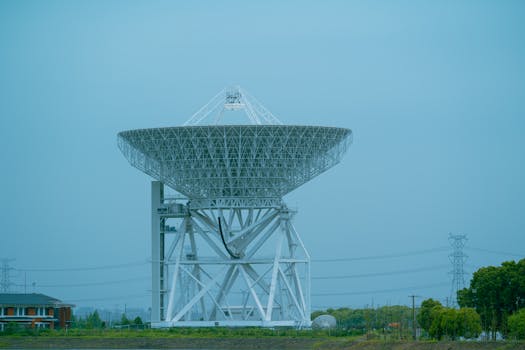The New Frontier: Exploring the Latest Trends in Satellite Communication

The New Frontier: Exploring the Latest Trends in Satellite Communication
Satellite communication is an essential part of our daily lives, from enabling global communication to providing critical services such as navigation, weather forecasting, and remote sensing. The latest trends in Satellite Communication are transforming the way we connect and communicate, and it is essential to explore these advancements to understand the future of this industry.
Introduction to Satellite Communication
Satellite communication involves the use of satellites to transmit and receive signals, enabling communication between different locations on the earth. Satellites are launched into orbit around the earth, and they receive and transmit signals to and from earth stations. The signals are then processed and transmitted to the final destination, allowing people to communicate with each other across the globe.
The history of satellite communication dates back to the 1960s, when the first commercial communications satellite, Intelsat 1, was launched. Since then, the industry has grown rapidly, with advancements in technology and innovations in the industry. Today, satellite communication is used in various applications, including television broadcasting, telecommunications, navigation, and remote sensing.
Advancements in Technology
Recent advancements in technology have transformed the satellite communication industry. One of the significant trends is the development of High-Throughput Satellites (HTS). HTS offer higher bandwidth and faster data speeds, enabling the transmission of large amounts of data quickly and efficiently. This has enabled the widespread adoption of satellite-based broadband services, providing internet access to remote and underserved communities.
Another trend is the use of Small Satellites, also known as CubeSats. Small satellites are smaller, lighter, and less expensive than traditional satellites, making them an attractive option for companies and organizations looking to launch satellites. They are also more agile and can be launched quickly, allowing for faster deployment of satellite-based services.
The development of Reconfigurable Satellites is also a significant trend in the industry. Reconfigurable satellites can change their configuration and operating parameters in real-time, allowing them to adapt to changing mission requirements. This enables satellites to be used for multiple applications, reducing the need for multiple satellites and increasing their overall efficiency.
Innovations in the Industry
The satellite communication industry is witnessing several innovations, including the development of 5G satellite networks. 5G satellite networks will provide faster data speeds and lower latency, enabling the widespread adoption of satellite-based services such as IoT, autonomous vehicles, and smart cities.
Another innovation is the use of Artificial Intelligence (AI) and Machine Learning (ML) in satellite communication. AI and ML are being used to optimize satellite operations, predict maintenance requirements, and improve the overall efficiency of satellite-based services. This is enabling satellite operators to reduce costs, improve performance, and provide better services to their customers.
The development of satellite-based IoT services is also a significant innovation in the industry. Satellite-based IoT services enable the connection of devices and sensors in remote and underserved areas, allowing for the monitoring and management of assets, people, and environments. This has applications in various industries, including agriculture, transportation, and energy.
Conclusion
In conclusion, the latest trends in satellite communication are transforming the way we connect and communicate. Advancements in technology, including the development of High-Throughput Satellites, Small Satellites, and Reconfigurable Satellites, are enabling the widespread adoption of satellite-based services. Innovations in the industry, including the development of 5G satellite networks, the use of AI and ML, and satellite-based IoT services, are providing new opportunities for growth and development.
As the satellite communication industry continues to evolve, it is essential to stay informed about the latest trends and advancements. This will enable individuals and organizations to take advantage of the opportunities provided by satellite communication and to contribute to the growth and development of the industry.



